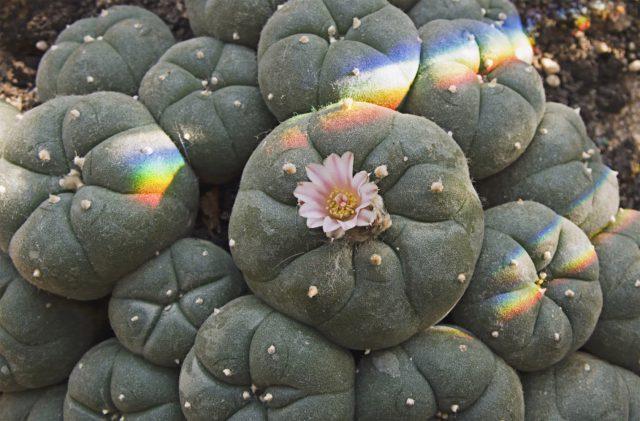By Annette Kirk/reporter
Speaker talks about stigma of peyote usage among natives
“The root of the devil” is what missionaries called peyote in an attempt to assimilate Native Americans, but peyotist Indians used tactics implemented by whites to fight back, a speaker told a SE Campus audience Sept. 19.
Lisa Barnett, a lecturer at Texas Christian University with a doctorate in Native American history, spoke for the Native Voices program hosted by the U.S. National Library of Medicine and the American Library Association.
Peyotist Indians were those who used peyote, a spineless cactus. Peyote is said to cause mild hallucinogenic effects to those who chew it or make it into an herbal tea to drink rather than smoking it.
Peyotism was originally practiced by pre-Columbus indigenous tribes near what is now the Mexico-Texas border. However, the use of peyote spread across the U.S. The epicenter was in Oklahoma among the Comanche and Kiowa tribes, but Barnett said the Navajo tribe is now one of the largest groups to practice the sacred ritual of peyotism.
When the Spanish came in 1620 to what is now North America and saw the rituals that the Native Americans practiced, they banned the use of peyote in an attempt to force assimilation into white culture and Christian religious practices. However, this attempt to ban peyote failed, Barnett said.
Through 1947, the white community continuously attempted to ban peyote, but Barnett said the Indians “began playing white to resist the ban,” meaning Native Americans used white men’s practices against them.
In 1918, the Indians found a loophole and formed the Native American Church rooted in Oklahoma. Barnett said this allowed them to use a religious exemption to use peyote during Prohibition such as when the Catholic church used wine for communion.
Barnett believes the issues with peyote stem from a racial and religious discriminatory nature. Peyote is not the intoxicant that the settlers made it out to be, she said. Native Americans practiced peyotism only during religious ceremonies. Barnett showed a picture from the time that said, “Indians go insane after eating Mexican beans,” inciting blame on an ethnicity that happens to live in the region where the cactus grows.
After failing to make peyote illegal, government officials then labeled it a narcotic by referring to the drug as “Indian dope.” Barnett said whites tried to attach the stigma of peyote on Native Americans the same way that opium had been attached to the Chinese and cocaine to African-Americans.
Only after the 1960s “hippie” movement did Americans learn more about peyote and began to use it recreationally. President Richard Nixon then classified peyote as a Schedule One narcotic. However, Barnett said peyote is not a narcotic.
It is simply an entheogen, a plant with chemicals that can “produce a non-ordinary state of consciousness for religious and spiritual purposes,” according to the Oxford Dictionary.
Barnett’s research will continue on into the healing properties of peyote within religious rites. Currently, she is in the process of turning her dissertation into a book.




































